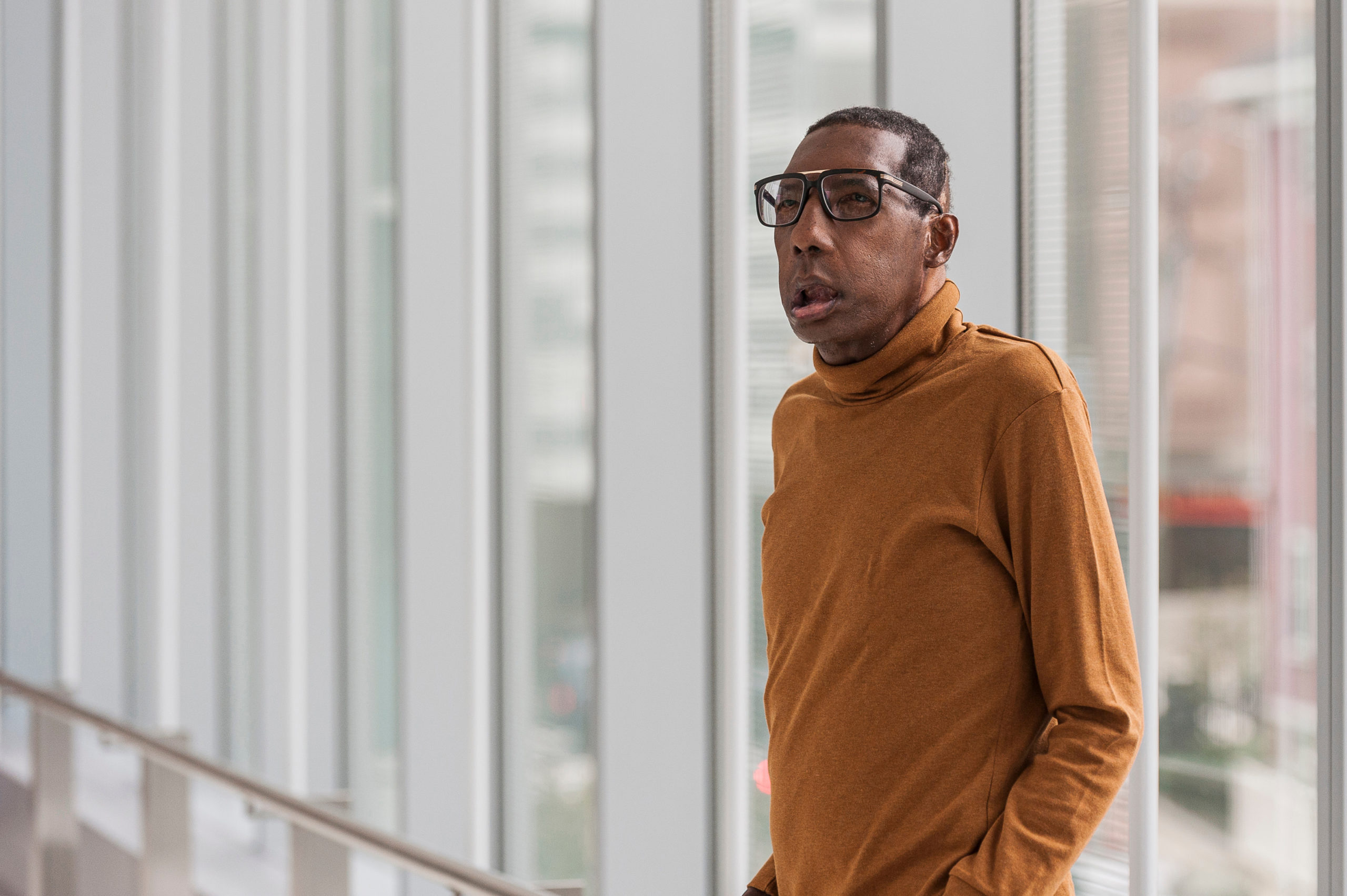The Author
Fay Bound Alberti

On 27 July 2019, Robert Chelsea became the first African American to undergo a face transplant. The facial injuries that led to a transplant occurred six years earlier, when a drunk driver struck Robert’s car, causing an explosion and third-degree burns over 60 per cent of his face and body. Robert received multiple reconstructions over several years. Once they had done all they could, his surgeons suggested Robert spoke to Bohdan Pomahac and his team at Brigham and Women’s Hospital in Boston.
Robert Chelsea and the First African American Face Transplant: Two Years On
Bohdan Pomahac and his team had performed the second partial face transplant in the USA on James Maki in 2009, and the first full face transplant in the USA on Dallas Wiens in 2011. By the time Robert was referred to the team, there had been fewer than 50 face transplants around the world, and none, as yet, on an African American patient. In his late 60s, he was also the oldest patient to date that had been considered for facial transplantation. Pomahac, meanwhile, had established himself as one of the world’s leading experts in the field. Would he and his team be able to provide the improvements in form and function that were sought by Robert: to enable him to eat and drink normally? To walk down the street without people staring, and insects falling into his mouth? To kiss the cheek of his daughter Ebony?
The First African American Face Transplant Patient
The decision to undergo the procedure was relatively swift for Robert, though the wait for a donor took time. A devoutly religious man, Robert believed that God had paved the way for the face transplant, putting Pomahac and his team in his path. For Robert’s family and friends, the decision was less cut and dried. Ebony worried that her father had already undergone more surgery than anyone could be expected to endure – how could he voluntarily undergo more? Her mother talked her round. Her father was doing it for reasons of ‘health’; he needed to be as well as he could be, even if that meant undergoing such a radical and risky procedure.
Robert’s transplant has been the subject of many media stories, focusing not only on the fact of his being the first African American to receive a face transplant, but also on his being the oldest such patient to date. There has been coverage, too, of the racial nuances involved; the fact that of course Robert needed a face that reflected the right skin tone for him. The hospital did not, until Robert’s operation, cover a wide range of skin tones when it came to matching donors and recipients; it took Robert’s procedure for them to rethink the implicit racism of the default White face transplant recipient. For his part, Robert has openly engaged with questions of racial inequalities in the system: the fact that for historical and social reasons there are fewer Black donors of all kinds than White. This gives Robert’s journey an additional sense of purpose: perhaps his media profile can pave the way for more public conversations about organ and tissue donation.

The Hidden Costs
When I spoke to Robert and his daughter Ebony, and to Robert’s godson Ricky, as well as some of Robert’s friends in advance of the second anniversary of his transplant on 27 July 2021, I was struck by the thoughtful reflectiveness of everyone concerned, and by the love and support that surrounded him. I was also reminded that Robert’s journey towards health is an ongoing one. One of the core concerns of the AboutFace project is the largely neglected cost for patients: social, psychological, financial, and physical. Because while most media reports focus on such innovative procedures as surgical milestones, and the visual transformations that can take place, there has been far less attention given to the lived experience of patients and their loved ones.
A face transplant is a highly visual shift from one form of appearance to another. Less visible, but equally important, are the behind-the-scenes challenges that patients must go through every day. At a physical level, there is a punishing regime of medications that include the immunosuppressants that prevent the rejection of donor tissue, and also come with a wide range of side effects besides the body’s weakened immunity to disease. In the first instance these include loss of appetite, nausea, vomiting, and trembling. Immunosuppressants can also cause other conditions, including diabetes and kidney disease.
Alongside these physical challenges are the social costs, as a patient is generally unable to work, as even when feeling relatively well. Being a long-term patient is time-consuming, and individuals rely on a steady stream of caregivers, paid and unpaid. Financially, the costs of those caregivers, of the medications, of travel to and from the hospital and day to day living expenses can rise far beyond that which is covered by medical insurance. Indeed, insurers do not tend to accept face transplant patients because it remains experimental medicine; the majority of such operations in the US have been paid for by the military.
Quality of Life for Patients
It is critical that we, as a society, and within medicine, start to acknowledge these hidden costs, that are not as transformative, dramatic, or immediately visible as the surgical procedure, but equally important to determining how far face transplants can be counted as successful. Quality of life for face transplant recipients must include not only some of the functional and psychosocial aspects of the procedure, in this case Robert’s ability to eat and drink normally, to kiss his daughter, and to avoid the stares of others, but also the implications for long-term health and care. Most face transplant recipients in the US (and potential recipients) need to fundraise to provide for this care, though its requirement can be seen as a side effect of the procedure itself. Quality of life must also consider the psychosocial implications of becoming a lifelong patient, with all the challenges to identity and meanings that this brings.
The work that we are doing at AboutFace, in collaborating with surgical teams, patients and their families, ethicists, sociologists, psychologists and people with lived experience of visible facial difference, shows how critical stories like Robert’s are to the historical framing of face transplants. Medicine does not, and has never, taken place within a vacuum. Like all other aspects of society, it is influenced by beliefs about race, ethnicity and gender (whether in the question of skin tone or presumptions about acceptable female appearance), and it is intensely emotional. Not only for patients, whose journeys towards health can be arduous and circuitous, in terms of outcomes as well as the emotional stamina needed to keep going, but also for surgical teams, who balance ‘risk’ and ‘need’ alongside their own personal and professional desires to progress the field.
Measuring Success
Historically, the experience of patients has not been core to evaluating the success of a surgical procedure. Christiaan Barnard’s first successful heart transplant in 1967 was not so successful for the patient Louis Washkansky, who died after just 18 days. Of course, surgeons care about their patients, but the long-term effects on the lives of patients and their families tend not to be prioritised when evaluating the clinical outcomes of procedures that are innovative and path-breaking.
In part this hierarchy reflects the fact that ‘quality of life’ measurements (like many categories associated with ‘mental health’) are inherently subjective, but it also reflects the ways medicine advances by implicitly prioritising the future needs of the many over the present few. Indeed, it is only within the last couple of years that surgical teams have begun collecting patient reported outcomes, and comparison between countries and institutions remains rare. We urgently need a more open and balanced discussion of human experience, and historical, comparative analyses of patient-reported outcomes alongside clinical findings, to evaluate the evolving role of face transplants. Listening to people like Robert Chelsea is a good place to start.



